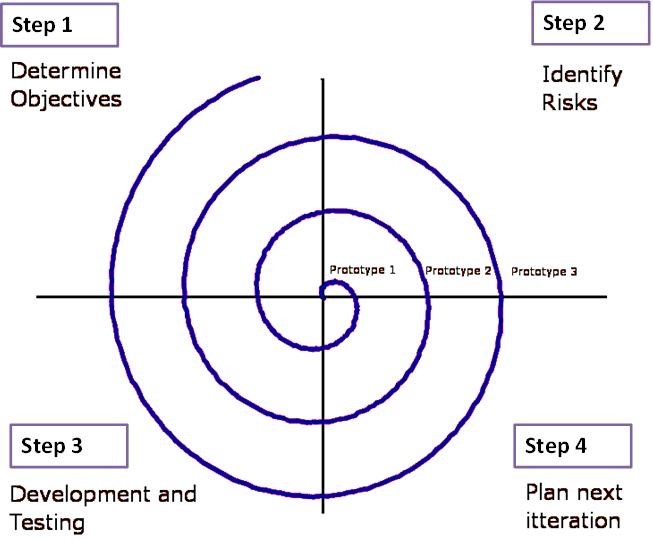
By now, all of you must have heard about the Spiral Model used in the Software Development Life Cycle, i.e. SDLC. Though we have heard it, many of us don’t exactly know the theory and implementation of it. Let’s discuss it in a bit detailed way in this blog.
The spiral model is a combination of the Prototype model and the Sequential Model. It is a specific design executed and planned for bigger projects. Also, these kinds of projects generally require constant improvements.
One can say that it is quite similar to the incremental model but it is still different because it emphasizes risk engineering, analysis, and evaluation.
A basic structure of the Spiral model is as follows.

Let’s dig deeper into it. In this article, we will have a look at various phases in the spiral model, its advantages as well as its disadvantages. First, let’s see what are the 4 stages involved in the Spiral Model.
Spiral Model – Stages
-
Planning phase: In this initial phase, all the required data and information regarding the project is collected. This includes requirements such as SRS (System Requirement Specifications), Cost estimation, BRS (Business Requirement Specification),Design Alteration, Resource Scheduling for iteration, etc.
-
Risk Analysis: Here, Project requirements collected in the earlier phase are analyzed and brainstorming sessions are held to predict future risks and errors.Once this is done, the planning and drafting of a report of strategies to eliminate and correct the errors are made.
-
Testing phase: In the third phase, the actual execution of tests takes place. This happens with the simultaneous execution of developmental variations.This includes actions like Test Case development, Test Summary report, Coding, Drafting of Bug report, and actual Test Execution.
-
Evaluation phase: Beta testers and focused groups of customers verify these changes before the project goes to the next phase. Can evaluate the tests and can give feedback before the project goes to the next level.
1st iteration – Preliminary risk analysis, Collection of required information and data, Panning, Engineering evaluation.
2nd iteration – Thorough risk analysis and evaluation, Advanced level planning.
3rd iteration – Selection of tools, Tests selection, Coding, Resource allotment.
4th iteration – Customer evaluation.
Spiral model – When to execute?
- At the time of high risk and budget.
- For a Project with risk ranging from medium to high.
- At the time of the regular requirement of release.
- For any complicated project.
- For Projects requiring regular variations.
- For non-reasonable long-term projects that owe to the change in financial preferences.
Spiral model – Pros and Cons
Pros
-
Easy management of risk makes this model a more efficient option to handle complicated and budget heavy projects. Also, it makes all the software testing projects transparent.
- In this model, the consumer or end-user can and does review the test results and its various levels.
- Segregation of the project into different stages makes the managerial aspects smooth.
- Control on the documentation is strong in this model.
- A realistic estimation of all the aspects of the project is an advantage of this model.
Cons
- An unhealthy model for small-scale projects due to the budget.
- Several intermediate stages owe to a large amount of documentation.
- The estimation of the closing date of the project cannot be done in the initial stages of the project.
- It is a complicated process.
- The primary requirement for the model is high expertise. If not, it won’t work.
Conclusion
As seen in the above image, each loop is a separate process in software testing. Remember, the main four stages discussed above, determining objectives, identifying risks, Development and Testing, and planning the next iteration are to be repeated several times until a satisfactory output is not achieved.
How VTEST can help
To execute and implement this model properly, a set of intellectual and technically sound software testers is required and VTEST is all about it. VTEST employs a good number of software testers who are techno-geeks as well as great planners.
The interpretation of the model done by VTEST is fine and more modified and we take pride in our hardworking testers for having a good success rate in the field of software testing. VTEST it!

